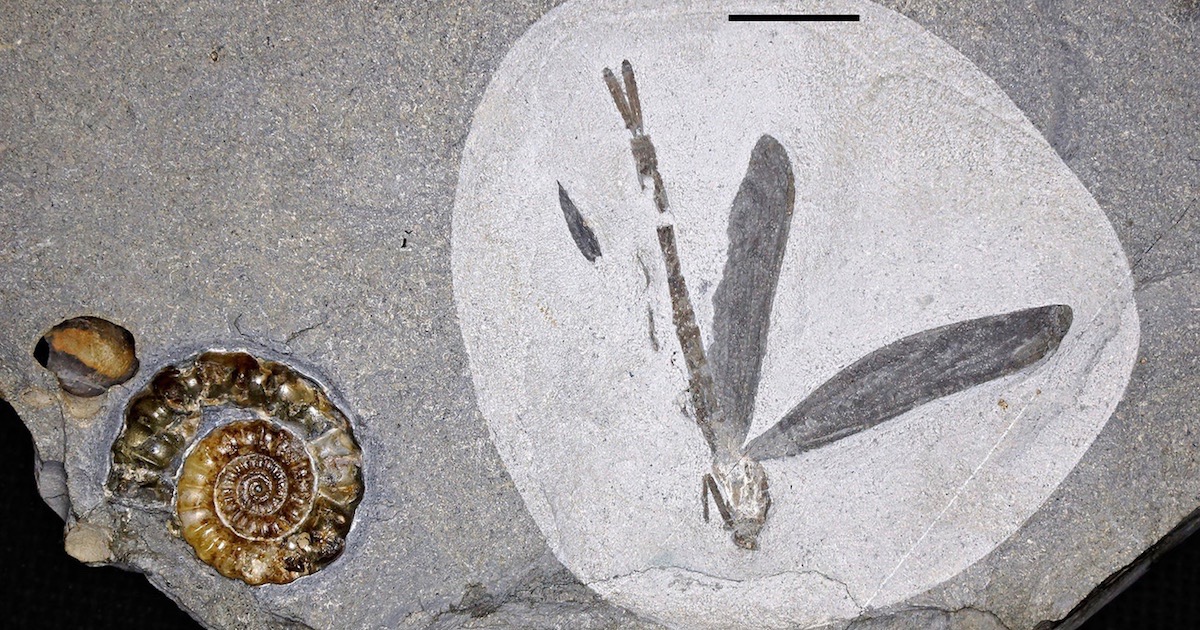 Michael Behe is one of the original design theorists and the author of Darwin’s Black Box. The fossil was named by Gunter Bechly, as he explains at Evolution News and Science Today:
Michael Behe is one of the original design theorists and the author of Darwin’s Black Box. The fossil was named by Gunter Bechly, as he explains at Evolution News and Science Today:
It was July 2011 when I accidentally stumbled upon a photo of a beautiful fossil dragonfly on a website about fossils from Early Jurassic sediments on the English coast at Charmouth in Dorset. I immediately recognized that this specimen is not only remarkably well-preserved, but certainly represents an unknown species as well.
He got permission to study the fossil. And it is a beauty.
Actually, it represents worldwide one of the most beautifully preserved and most complete fossil dragonflies from the Early Jurassic period known at all. It allowed body characters of Asiopteridae to be described for the first time, which include compound eyes that meet dorsally, robust thorax, legs with short spines, and very long leaf-like terminal appendages (cerci). The forewing venation features a short fusion of veins near the tip of the so-called discoidal cell, which is an absolutely unique character state within the order Odonata. This is now described for the first time, having never been observed in any of the approximately 6,500 species of fossil and recent damselflies and dragonflies. With an estimated wing span of 4.5 inches, it is also a relatively large odonate, especially for its era.
The fossil has implications for ID:
A study of the different anatomical features of this fossil and comparison with other fossil odonates revealed a very incongruent pattern of similarities. Such homoplasy is a ubiquitous phenomenon in systematic biology and does not readily align with a hierarchical system required by evolutionary classification. While surprising from the perspective of common ancestry, such incongruences would not be surprising from the perspective of common design. This suggests that the currently ruling paradigm of cladistic classification based on assumed common ancestry should be reconsidered in favor of a traditional phenetic classification based on maximum similarity. More.
So what to name it? Bechly chose Chrismooreia michaelbehei, the first name being that of the fossil hunter who owns the specimen.
What chance Darwinists will get up a petition to force a name change, and maybe “unlearn” everything Bechly discovered about the fossil? Maybe a person they prefer could study it all over again, once again erasing Bechly (and Behe). After all, Wikipedia erased Bechly, despite his stellar record, apparently over his support for design in nature.
Paper. Open access as pdf. Warning: This link takes you to BIO-Complexity, an ID-friendly peer-reviewed journal. Depending on where you work, it might not be safe for work.
See also: “Erased” paleontologist Bechly gets support from Science and Health Council